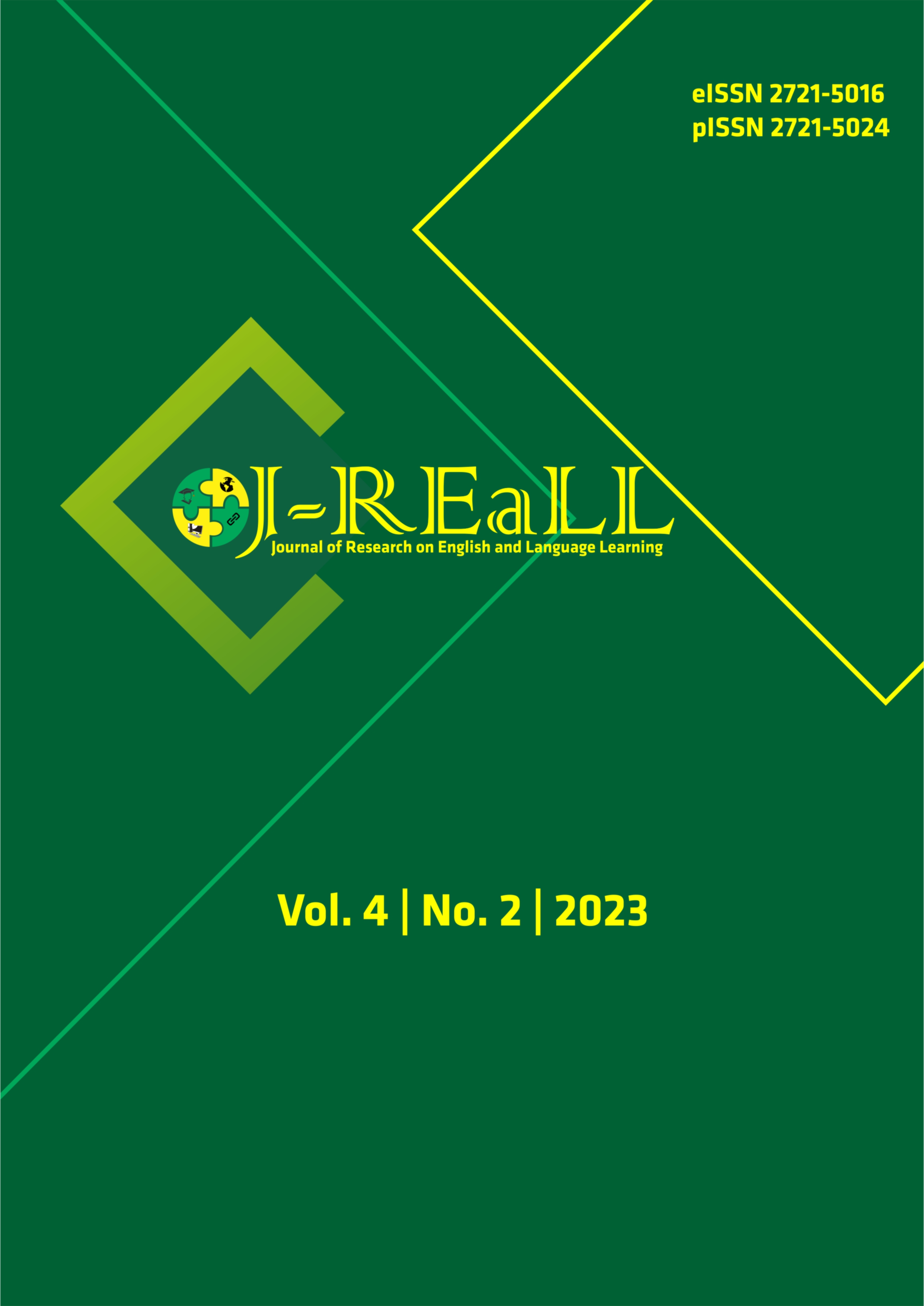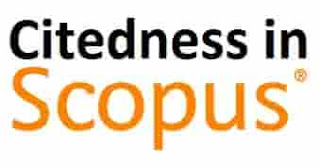Native English teachers (NETs) strategies in teaching English to non-native learners
DOI:
https://doi.org/10.33474/j-reall.v4i2.20170Keywords:
native English teachers’ strategies, non-native learners, teaching EnglishAbstract
Students prefer learning English with native English teachers (NETs) compared to non-native English teachers (NNETs). Knowing how the NETs teach in the class, like their learning activities, would be very interesting. The purpose of this research is to find out the strategies used by NETs in teaching English to non-native learners. Five NETs were chosen based on the demographic information questionnaires and to be interviewed to describe the strategies that they used in teaching English, especially speaking skills, to non-native learners. This is the qualitative design with the case study tradition. Three themes were found as the result of this study: NETs’ strategies in teaching English (how to begin the class, the activities during the class, and how to end the class), media used in teaching English, and games used during teaching. The various fun activities provided by the NETs in teaching English could be useful information for other NETs, fresh graduate English teaching students, and English teachers who want to teach English in non-native English countries.
References
Ardhianto, Awan. 2017. The use of games to teach English to young learners. Published Thesis. Satya Wancana Christian University.
Bedford, R. C. (1970). The role and function of the native teacher. English Teaching Forum, 8(5), 7-11.
Braine, G. 2010. Non-native speaker English teachers: Research, pedagogy, and professional growth. New York: Routledge
Creswell, J. W. (2009). John W. Creswell’s research design 3rd Ed. In Research Design 3rd Ed. https://www.worldcat.org/title/research-design-qualitative-quantitative-and-mixed-methods-approaches/oclc/269313109
Crystal, D. (2008). Two thousand million? English Today, 24(1), 3–6. https://doi.org/10.1017/S0266078408000023
Faoyan, Agus Furyanto. 2015. The implementation of discussion technique in teaching speaking. Vidya Karya Journal. 30 (1); 60-65
Fountas, L.C. & Pinnel, G.S. 2006. Teaching for comprehending and fluency: Thinking, Talking and Writing about Reading, K-8. Heinemann, Portsmouth, NH.
Harmer, Jeremy. How To Teach English. London: Longman.
İsmet, Ş. (2005). The effect of native speaker teachers of English on the attitudes and achievement of learners. Journal of Language and Linguistic Studies, 1(1), 40–58.
Jie, Z. (1999). How can a Chinese teacher of English succeed in oral English classes? TESL Journal, 5 (7), 2023.http://www.aitech.ac.jp/~iteslj/articles/Zhou-successfulTeacher.html.
Kurniawati, K., & Rizki, D. (2018). Native vs. non-native EFL teachers: Who are better? Studies in English Language and Education, 5(1), 137–147. https://doi.org/10.24815/siele.v5i1.9432
Manalu, Astrie. 2010. Teachers technique in teaching speaking at SMA Xaverius 2 Kota Jambi. Unpublished Thesis. Jambi: Universitas Jambi
Mantali, S. M.A. 2009. The application of reading aloud technique to increase students’ pronunciation. Published Thesis. Gorontalo State University.
Megawati, W., & Hartono, R. (2020). The impact of teachers' verbal and non-verbal communication on students' motivation in learning English. English Education Journal, 10(4), 436–448. https://doi.org/10.15294/eej.v10i4.39157
Miarso, Y. (2009). Sowing educational technology. Jakarta: Kencana Prenada Media Group.
Msamba, E. M., Msuya, E. A., & Anangisye, W. A. L. (2023). The impact of in-service education and training on teachers’ learning: Perspectives from English foreign language teachers in Tanzania. Education Research International, 2023. https://doi.org/10.1155/2023/6135444
Ocktarani, Y. M. (2021). Students’ voice over technology-based speaking class. English Language and Literature International Conference (ELLiC) Proceedings, 4(Vol 4 (2021): Creative and Innovative Learning Strategies in The Field of Language, Literature, Ling), 235–240. https://jurnal.unimus.ac.id/index.php/ELLIC/article/view/7483/5540
Red-Baer, R. (1995). English for communication: Why it isn’t and how it can be? The Edogawa Women’s Junior College Journal 10_ Edogawa, Tokyo, Japan. Retrieved from the world wide web: http://www.edogawau.ac.jp/robert/eng4com.htm
Sahin, I. (2005). The effect of native speaker teachers of English on the attitudes and achievement of learner. Japan. University of Kacoeli.
Syiyami, I., Haryanti, E., Nurwanti, D., & Kurniawati, N. (2020). The use of reading aloud method to improve students’ speaking ability: Indonesian secondary school. December 2021, 250–256. https://doi.org/10.5220/0008216502500256
Talak-kiryk, A. (2010). Using games in a foreign language classroom. MA TESOL Collection., 1(1), 53. http://digitalcollections.sit.edu/ipp_collection
Tosuncuoglu, İ. (2017). Non-native & native English teachers. Journal of History Culture and Art Research, 6(6), 634. https://doi.org/10.7596/taksad.v6i6.573
Waloyo, E., & Fatekha, L. (2022). Exploring the use of media in teaching speaking. Language and Education, Volume 7, No. 2, November 2022. 7(2), 75–86.
Yulitrinisya, W., & Narius, D. (2018). Using pair work technique in teaching speaking at junior high school. Journal of English Language Teaching, 7(1), 157–163. http://ejournal.unp.ac.id/index.php/jelt
Downloads
Published
How to Cite
Issue
Section
License
Copyright (c) 2023 Pebrina Pirmani, Mayang Sastra Sumardi, Rahmadani Putri

This work is licensed under a Creative Commons Attribution 4.0 International License.
Authors who publish this journal agree to the following terms:
- Authors retain copyright and grant the journal right of first publication with the work simultaneously licensed under a Creative Commons Attribution License that allows others to share the work with an acknowledgement of the work's authorship and initial publication in this journal.
- Authors can separately make additional contractual arrangements for non-exclusive distribution published by the journal (e.g., publish it in a book), with an acknowledgement of its initial publication in this journal.
- Authors are allowed and encouraged to send their work via online (e.g., in the institutional repositories or their website) after published by the journal.






















